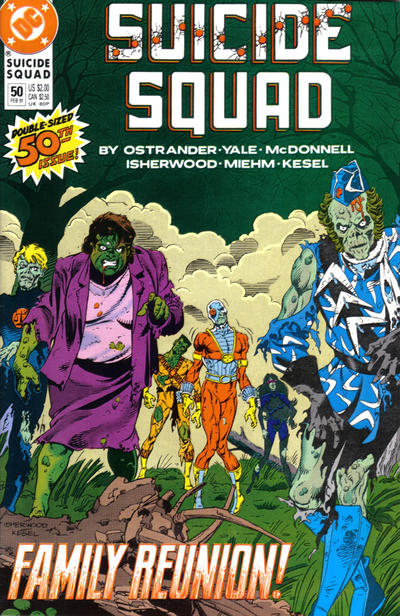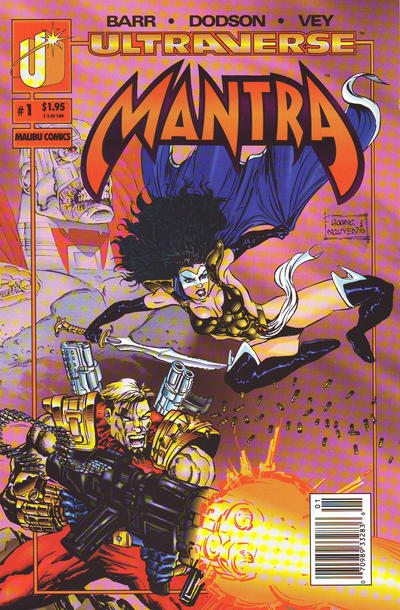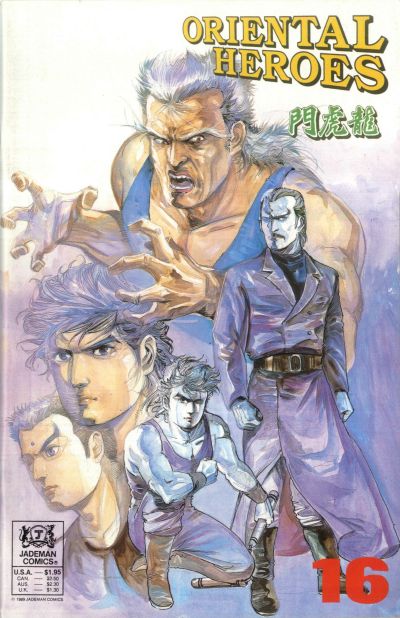Rick Flag’s unknown son is kidnapped by one of his old team mates turned zombie master in this double sized extravaganza told by John Ostrander, Kim Yale, Luke McDonnell, Geoff Isherwood, Grant Miehm and Karl Kesel.

It’s a tribute to all involved that this story, which leans heavily on knowledge of not just all previous 49 issues, but also on that of the original Suicide Squad, was so readable even to a new reader like I was at the time. The Suicide Squad had been a classic The Brave and the Bold feature. The Jack Kirby created Challengers of the Unknown had set a vogue for four person adventure themes and over the years DC would introduce Rip Hunter and his team (time travelling Challengers), Cave Carson and co (cave digging Challengers), Seadevils (underwater Challengers) and the Squad itself (paramilitary scientist Challengers). They got six appearances in The Brave and the Bold but didn’t do much and were forgotten until Rick Flag was brought back in a Superman adventure as one of the Forgotten Heroes. That’s where I knew him from.
I bought this new when my local comic shop started carrying it as it expanded the American comics it carried. It was the first ever Suicide Squad issue I bought. It took me a couple of issues to get used to the series. Issue 53, which started the Dragon’s Hoard story that ran for several issues, was the one that hooked me. A story not unlike the one that hooked me on Captain America, with multiple dangerous groups fighting over the same treason and the Squad caught in the middle. If issue 50 left me a bit confused and unsure about the Squad, it was still good enough to let me keep buying it. and once issue 53 hooked me completely, I kept buying until the end and started buying the back issues, filling in pieces of the puzzle that issue 50 had presented.
What made suicide Squad so good was the simple fact that John Ostrander and Kim Yale were the sole writers for the entire series and had a coherent vision of it from the start. The Squad fit in with the more cynical nature of the Post-Crisis, mid-eighties DC Universe. You had an ambitious bureaucrat/politician, Amanda Waller, looking for a way to get ahead in the Reagan administration, coming up with a plan to use convicted supervillains on missions for the government. You had a good mix of actual heroes like Rick Flag, Bronze Tiger and Nightshade riding herd on a mix of outright villains and amoral scum like Captain Boomerang, Deadshot, the Enchantress and others. They weren’t shy about killing off characters either, with every mission leaving at least one member dead behind (the odds increased whenever a Firestorm villain was involved). By issue 50 the Squad had been exposed, cut loose from the government and now operating as out and out mercenaries.
A fun series that quickly became one of my favourites. In general I liked that whole dark corner of the DC Universe the Squad operated in. One of these days I should write more about it.


